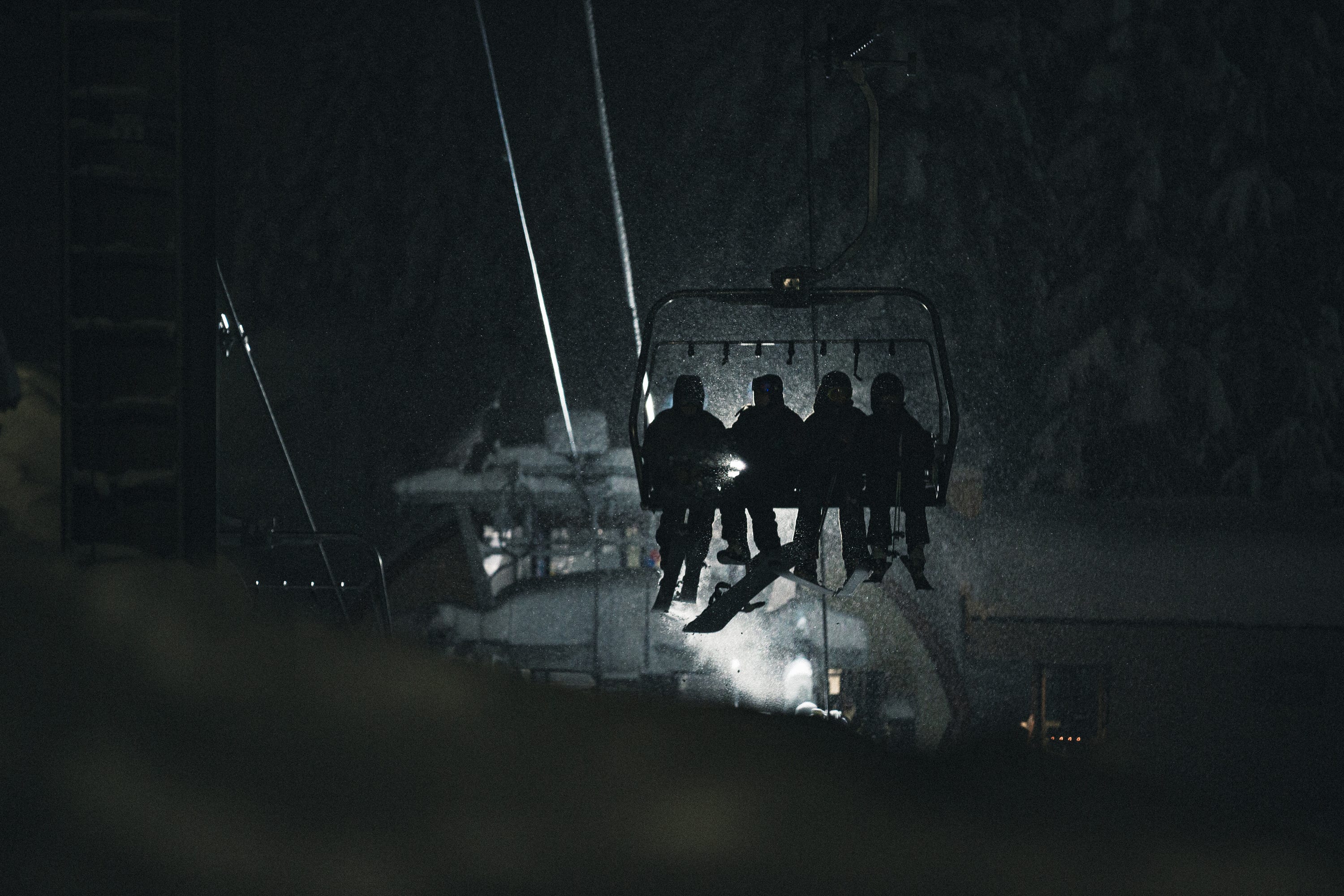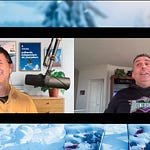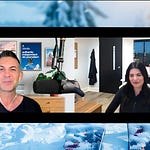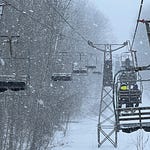Who
Ellen Galbraith, Vice President and General Manager of Stevens Pass, Washington
Recorded on
June 5, 2023
About Stevens Pass
Click here for a mountain stats overview
Owned by: Vail Resorts
Located in: Skykomish, Washington
Year founded: 1937
Pass affiliations:
Unlimited access on Epic Pass, Epic Local Pass, Stevens Pass Premium Pass
Stevens Pass Select Pass: blacked out during the day on all holidays plus weekends from Dec. 16 to March 10; night skiing allowed on all days
1- to 7-day access on Epic Day Pass – All Resorts and 32 Resorts versions
Closest neighboring ski areas: Leavenworth Ski Hill (40 minutes), Badger Mountain (1 hour, 28 minutes), Mission Ridge (1 hour, 29 minutes), Echo Valley (1 hour, 58 minutes), Summit at Snoqualmie (2 hours, 4 minutes), Loup Loup (2 hours, 49 minutes) - travel times vary considerably given weather conditions, time of day, and time of year
Base elevation: 3,821 feet at Mill Valley; 4,061 feet at main base
Summit elevation: 5,600 feet at top of Big Chief Mountain, 5,845 feet at top of Cowboy Mountain
Vertical drop: 1,779 from top of Big Chief to bottom of Mill Valley, 1,784 from top of Cowboy to main base
Skiable Acres: 1,125
Average annual snowfall: 460 inches
Trail count: 57
Lift count: 11 (4 high-speed quads, 2 fixed-grip quads, 2 triples [Southern Cross and Double Diamond are one long up-and-over lift], 1 double, 2 carpets – this is the anticipated lift fleet for 2023-24, which includes the upgrade of Kehr’s from a Riblet double to a fixed-grip quad) – view Lift Blog’s inventory of Stevens Pass’ lift fleet.

Why I interviewed her
There is a version of reality in which Washington is a sort of Tahoe North, its snow-bombed ski centers defined by condos bunched mountainside and mixed-use base villages Lego-bricked together for the weekender and spring-breaker. In which the state competes with Colorado or Utah or Montana or Wyoming for conventions and competitions and ski clubs by the planeload. In which Washington skiing matters to anyone other than Washington skiers.
But this is not the reality we live in. Because despite several defining factors shared by other great ski regions – plentiful snowfall, proximity to a large airport, locations along major highways, plentiful natural snow, large vertical drops – the state’s ski areas are, for the most part, day-drivers. There is little slopeside lodging, nothing approximating a pedestrian base village. Just scattered cabins, ubiquitous RV lots, hotels 40 miles from the lifts.
Which, when Washington was a scenic American backwater, was fine. But Seattle is the fastest-growing big city in America. And those new arrivals have money to spend: per-capita personal income in the region has more than doubled in the past 20 years, from $39,965 annually in 2003 to $89,274 today, a rate that has significantly outpaced inflation. Thank Amazon or Microsoft or Starbucks or Boeing. But whatever’s driving this general affluence, the region’s ski infrastructure has simultaneously benefitted from it and failed to keep up.
There are good reasons that Vail (Stevens Pass) and Alterra (Crystal) and Boyne (Summit at Snoqualmie) all own ski areas within Seattle’s orbit – it’s a rabid and monied market, and one with a reliable enough snowtrain that Stevens Pass owns exactly two snowguns. Snoqualmie doesn’t have any (well, a few for their tubing park). All of these companies know how to build resorts. But they can’t do it in Washington. Hemmed in by national parks or NIMBYs or terrain too severe for building, they are stuck with powder-day and weekend parades of SUVs dozens of miles long.
Which takes us to the purpose of this podcast. What is the future of Washington skiing? That it should continue unchanged seems an insane proposition. But absent large-scale infrastructure investment, the state’s Seattle-adjacent ski areas have had to get creative to manage crowds. Crystal’s season pass price nearly tripled in just two years. Summit at Snoqualmie is trying to build its way out with ever-more, ever-more-high-capacity lifts. And Stevens Pass follows the mothership’s policy of limiting day tickets even as access remains unlimited on a variety of highly affordable Epic Passes.
Washington will likely never be an epicenter of destination ski resorts like the Wasatch or Summit County or Tahoe. But it does need to evolve into something other than what it is right now: a big-mountain, high-traffic region that is trying to pretend like it’s Michigan’s Upper Peninsula, isolated and depopulated and wild. Stevens Pass will be an important character in this drama, creating one version of what it means to be a busy Pacific Northwest Ski area in the so-far eruptive 2020s. Hang on.

What we talked about
Stevens Pass’ relationship to Whistler; whether the ski area has jumped regional destination status; the ski area’s lower-than-average snowfall this past season; the often treacherous but indispensable US-2; earning back trust after you lose it; working the 2002 Olympics; Beaver Creek and the art and importance of grooming; why Galbraith volunteered to work at Stevens Pass when everything started to go sideways during the 2021-22 ski season; the moment the ski area turned around; rethinking parking; employee housing; lodging; RV life; the Kehr’s chairlift upgrade; why Stevens Pass is upgrading Kehr’s before the even older Seventh Heaven lift; thoughts on replacing Seventh Heaven; the unique up-and-over Double Diamond/Southern Cross lift and whether a future version would still combine the two lifts or upgrade to a detach; potential expansions and lift additions; the masterplan; Stevens Pass snowmaking “system”; the night-skiing footprint; why Stevens Pass still has its own Epic Pass and why the mountain remains unlimited on the Epic Local Pass; comparing Crystal and Stevens’ varying responses to Washington’s population explosion; and limiting lift ticket sales.
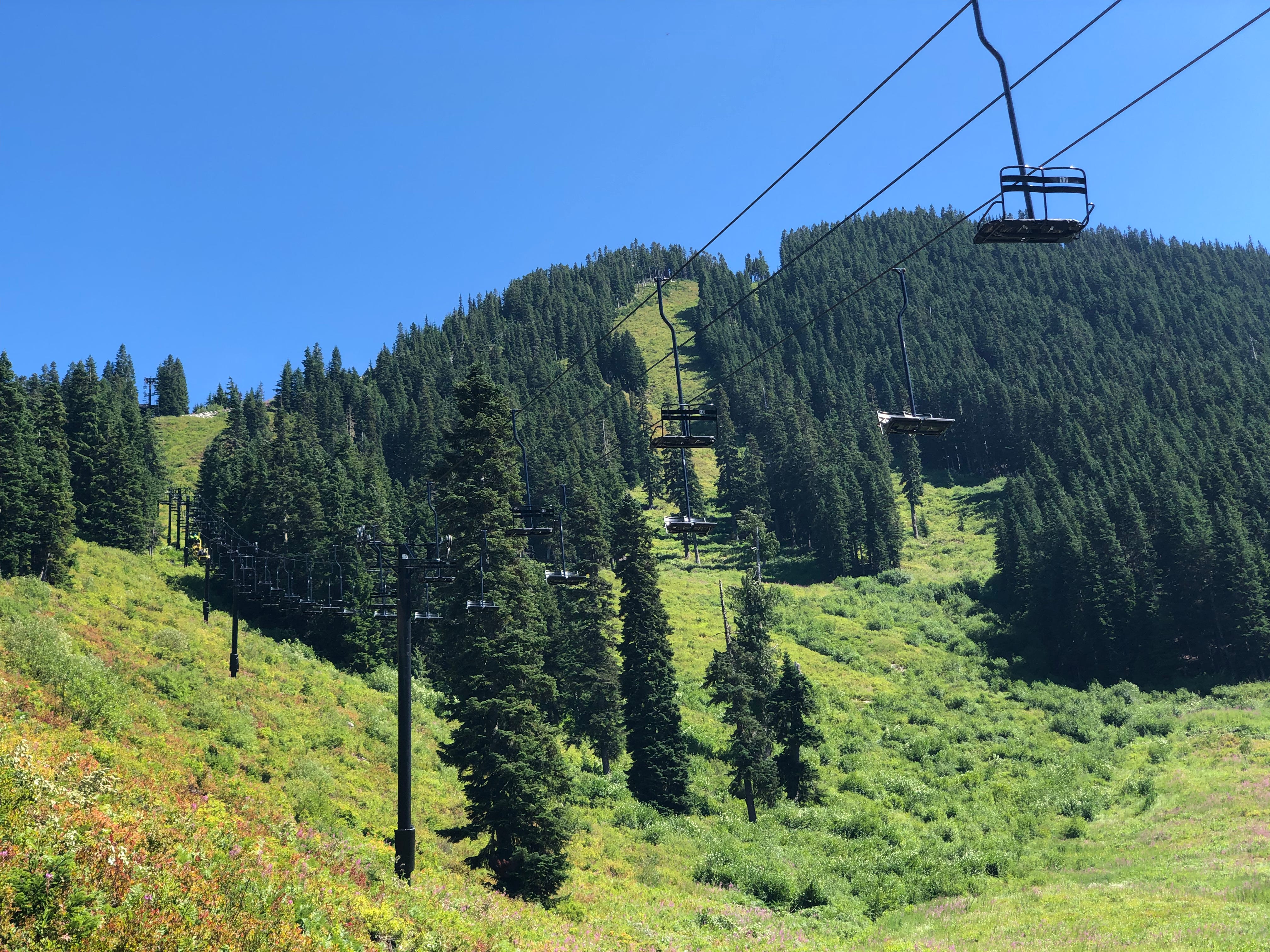
Why I thought that now was a good time for this interview
At some point, we’ll be able to stop discussing the disastrous start to Stevens Pass’ 2021-22 ski season. But, to both set context around Galbraith’s arrival and to distance her from the genesis of the issues, I’ll reset it one more time. Gregory Scruggs, writing in The Seattle Times last year:
After a delayed start to the season, snow hammered the Cascades during the [2021]holiday week. Severely understaffed, Stevens Pass struggled to open most of its chairlifts for six weeks, including those serving the popular backside terrain.
Vail Resorts, which bought Stevens Pass in 2018, had sold a record number of its season pass product, the Epic Pass, in the run-up to the 2021-22 winter, leaving thousands of Washington residents claiming that they had prepaid for a product they couldn’t use. A Change.org petition titled “Hold Vail Resorts Accountable” generated over 45,000 signatures. Over 400 state residents filed complaints against Vail Resorts with the state Attorney General’s office. In early January, VailDaily reported that Vail’s stock price was underperforming by 25%, with analysts attributing the drop in part to an avalanche of consumer ire about mismanagement at resorts across the country, including Stevens Pass.
On Jan. 12, Vail Resorts fired then-general manager Tom Pettigrew and announced that [Tom] Fortune would temporarily relocate from his role as general manager at Heavenly Ski Resort in South Lake Tahoe, California, to right the ship at Stevens Pass.
Fortune, the current head of Heavenly and Vail’s Tahoe Region, had grown up at the ski area, and Stevens’ resurrection constituted a deeply personal mission. He laid out the whole experience when he joined The Storm Skiing Podcast back in April. But after jump-starting the machine, he had to get back to Tahoe. Enter Galbraith, who had worked her way up through the Vail ranks and earned her first shot as a mountain general manager last June. Scruggs wrote a follow-up article this past January, to check in on Stevens and assess her first half-year as resort lead:
Galbraith, 42, was brought in to help right the ship last season under interim general manager Tom Fortune as Stevens Pass struggled to operate at full capacity, with staff shortages leading to long lines, closed terrain and irate season pass holders. In May, Galbraith became general manager, and by all accounts the guest experience has improved dramatically since its nadir one year ago. For longtime Stevens Pass regulars, their home mountain feels back to normal, with all 10 chairlifts spinning and ski runs open every day, conditions permitting, and lodges fully open for business. And more promised capital upgrades from deep-pocketed Vail are on the way.
“Those memories from last year are still very front of mind,” said Galbraith, from her office overlooking the mountain, where a David Horsey cartoon featuring the abominable snowman lampooning the Stevens Pass debacle is tacked above her desk next to a quote from Gen. George S. Patton. …
While customers signed a Change.org petition to hold Vail Resorts accountable last winter and filed consumer complaints with the state attorney general, Stevens Pass is generally earning higher marks under Galbraith’s tenure.
“After last year’s D-plus effort, I give this year a solid B-plus,” said Will Roberts, of Edmonds, via email. “My family is having fun and we are happy to come to Stevens Pass.”
So, with a season behind her, how was it going? While the Epic and Ikon passes have somewhat scrambled the traditional who-gets-attention calculus, skiers outside of the Pacific Northwest rarely hear about the region’s ski areas unless things get terrible. A heat wave ends Timberline’s famous summer season three weeks early. The unlimited-Ikon-Base-Pass-inspired Crystal Mountain meltdown of 2020. Stevens Pass goes sideways. When the national ski media ignores the PNW, that typically means everything’s going OK.
And we didn’t hear much about Stevens this year, did we? Lift aficionados are aware of the Kehr’s chairlift upgrade. Powderchasers know the ski area came in significantly under its annual snowfall average despite bomber conditions throughout the West. Locals know that the ski area lost several days to road shutdowns on notoriously dicey US 2. But the rest of us mostly forgot about the joint, and for Vail Resorts, that was probably the best possible outcome.
Questions I wish I’d asked
If I’d had more time, or if this interview had been 10 years earlier, or if the mountain hadn’t been shuffled among owners in the interim, we surely would have discussed the 2012 Tunnel Creek avalanche. The incident killed three skiers in the popular backcountry area adjacent to Stevens Pass. This Pulitzer Prize-winning New York Times feature story by John Branch offers a definitive account of what happened that day. It is a long but essential read, and basically scared me away from the backcountry forever.
Why you should ski Stevens Pass
Usually Facebook is a wasteland overrun by morons who either lack brains, lack empathy, or both. As though someone had flushed the contents of the DSM-5 into the digital netherworld. But once in a while, a flash of brilliance. I observed such an exchange around the time Vail Resorts purchased Stevens Pass in 2018. I can’t find the original conversation, so I’ll paraphrase:
PERSON 1: This is terrible, I don’t want a bunch of Vail skiers overrunning my ski area.
PERSON 2: You have nothing to worry about. No one is coming from Colorado to ski Stevens Pass. Vail is buying it so that Stevens regulars will go to Park City/Vail/Breckenridge/Whistler on vacation.
Person two was right, of course, to an extent. Sure, Colorado or Utah skiers are generally happy reminding everyone that they live in Colorado or Utah. But to an Epic Pass holder living in, say, Pennsylvania or Michigan or New York or Wisconsin, an 1,800-foot, 1,100-acre ski area that averages 460 inches of snow annually sounds like a rowdy good time worth traveling for. Particularly since that ski area is pretty easy to reach via Seattle.
I asked Galbraith whether, under the Epic Pass, Stevens had begun to attract more destination guests. She said that it had. It is likely a modest increase, and Stevens Pass will never offer the slopeside condos and snow quality of Utah or Colorado. But it is a revered ski center in a gorgeous natural setting with fierce skiing and a well-defined locals’ culture. In our checklist era that the Epic Pass has enabled and defined, Stevens Pass is one mountain that every skier ought to hit eventually.
Podcast Notes
On Washington’s ski area landscape
Washington has just 16 ski areas and nearly 8 million residents. That gives the state one of the lowest numbers of ski areas, by geographic or population size, of any major ski state:
While some of the state’s ski areas are quite large, only 11 have chairlifts:
We have a better chance of seeing Loup Loup on the Epic Pass than we do of ever building another ski area in Washington State. So this is what we have to work with.
The Storm publishes year-round, and guarantees 100 articles per year. This is article 54/100 in 2023, and number 440 since launching on Oct. 13, 2019. Want to send feedback? Reply to this email and I will answer (unless you sound insane, or, more likely, I just get busy). You can also email skiing@substack.com.




